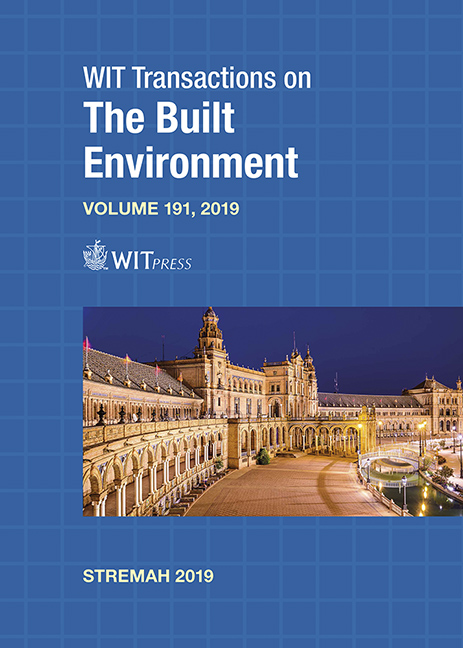SPANISH SOCIAL HOUSING IN THE 20TH CENTURY: TYPOLOGICAL ANALYSIS OF RESIDENTIAL COMPLEXES BUILT IN CASTELLÓN IN THE 1950S
Price
Free (open access)
Transaction
Volume
191
Pages
9
Page Range
177 - 185
Published
2019
Paper DOI
10.2495/STR190151
Copyright
WIT Press
Author(s)
MANUEL CABEZA GONZÁLEZ, BEATRIZ SÁEZ RIQUELME, MARÍA JOSÉ RUÁ AGUILAR, PATRICIA HUEDO DORDÁ, RAQUEL AGOST FELIP
Abstract
Since the 1940s, populations of Spanish cities have grown intensely, which was motivated mainly by rural emigration. In order to provide housing for such population growth, a great deal of social housing was built. The state would initially and directly control the implementation of this new urban structure by establishing a relative unitary housing typology, especially in the 1950s when most social housing legislation was introduced. These buildings, which helped shape the outskirts of cities at the time, now form part of their consolidated urban pattern, and their image shows the social character that identified these building types. At the same time, both the building image and housing typology are an anachronistic reference that needs to be intervened in order to adapt to changing life habits that today’s society demands. In Castellón, most of these social housing were carried out in the 1950s by the Obra Sindical del Hogar, an organisation that depended on the Instituto Nacional de la Vivienda, and was responsible for most of the social housing built during this period. This paper shows the results of the typological analysis of these residential complexes, which seems to indicate the obsolescence of such a housing type and, at the same time, offers valuable information to refurbish this large building stock in the city according to new users’ needs.
Keywords
housing typology, Castellón de la Plana, Obra Sindical del Hogar




